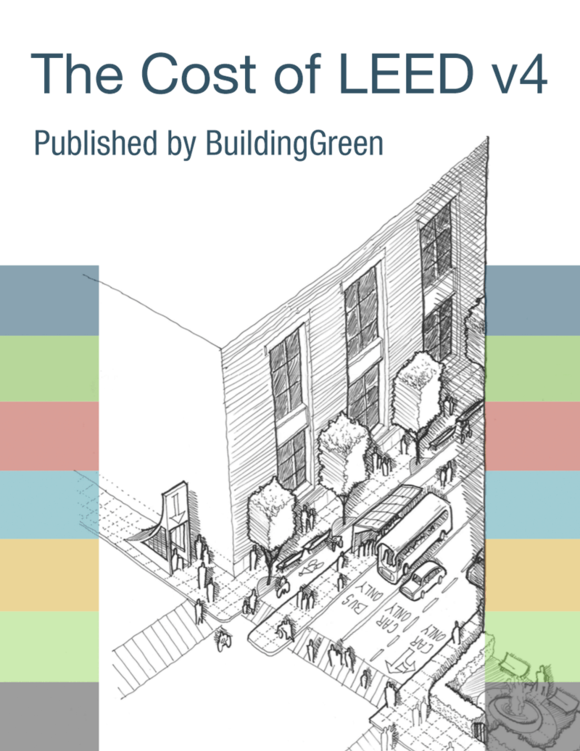LEEDuser’s viewpoint
Frank advice from LEED experts
LEED is changing all the time, and every project is unique. Even seasoned professionals can miss a critical detail and lose a credit or even a prerequisite at the last minute. Our expert advice guides our LEEDuser Premium members and saves you valuable time.
Credit language
Requirements
Option 1. Previously Developed Land
Locate the development footprint on land that has been previously developed.
OR
Option 2. Avoidance of Sensitive Land
Locate the development footprint on land that does not meet the following criteria for sensitive land:
- Prime farmland. Prime farmland, unique farmland, or farmland of statewide or local importance as defined by the U.S. Code of Federal Regulations, Title 7, Volume 6, Parts 400 to 699, Section 657.5 (or local equivalent for projects outside the U.S.) and identified in a state Natural Resources Conservation Service soil survey (or local equivalent for projects outside the U.S.).
- Floodplains. A flood hazard area shown on a legally adopted flood hazard map or otherwise legally designated by the local jurisdiction or the state. For projects in places without legally adopted flood hazard maps or legal designations, locate on a site that is entirely outside any floodplain subject to a 1% or greater chance of flooding in any given year.
- Habitat. Land identified as habitat for the following:
- species listed as threatened or endangered under the U.S. Endangered Species Act or the state’s endangered species act, or
- species or ecological communities classified by NatureServe as GH (possibly extinct), G1 (critically imperiled), or G2 (imperiled), or
- species listed as threatened or endangered specifies under local equivalent standards (for projects outside the U.S.) that are not covered by NatureServe data.
- Water bodies. Areas on or within 100 feet (30 meters) of a water body, except for minor improvements.
- Wetlands. Areas on or within 50 feet (15 meters) of a wetland, except for minor improvements.
Canada ACP: Prime Farmland
In Canada, if the project is mapped under the Canada Land Inventory (CLI), then
prime farmland is land classified as Class 1, 2 or 3 of this inventory. For projects located on sites not mapped by this inventory, follow global guidance for local equivalents.
See all forum discussions about this credit »
What does it cost?
Cost estimates for this credit
On each BD+C v4 credit, LEEDuser offers the wisdom of a team of architects, engineers, cost estimators, and LEED experts with hundreds of LEED projects between then. They analyzed the sustainable design strategies associated with each LEED credit, but also to assign actual costs to those strategies.
Our tab contains overall cost guidance, notes on what “soft costs” to expect, and a strategy-by-strategy breakdown of what to consider and what it might cost, in percentage premiums, actual costs, or both.
This information is also available in a full PDF download in The Cost of LEED v4 report.
Learn more about The Cost of LEED v4 »
Addenda
4/9/2021 – Updated: 4/20/2021
Rating System Correction
Description of change: Revise the below LT credit intents as follows:
LTc Sensitive Land Protection
"To cultivate community resilience, avoid the development of environmentally sensitive lands that provide critical ecosystem services and reduce the environmental impact from the location of a building on a site."
LTc High Priority Site and Equitable Development
"To build the economic and social vitality of communities, encourage project location in areas with development constraints and promote the ecological, cultural, and community health of the surrounding area while understanding the needs and goals of existing residents and businesses."
LTc Surrounding Density and Diverse Uses
"To conserve land and protect farmland and wildlife habitat by encouraging development in areas with existing infrastructure. To support neighborhood and local economies, promote walkability and low or no carbon transportation, and reduce vehicle distance traveled for all. To improve public health by encouraging daily physical activity."
Internationally Applicable: No
See all forum discussions about this credit »
Documentation toolkit
The motherlode of cheat sheets
LEEDuser’s Documentation Toolkit is loaded with calculators to help assess credit compliance, tracking spreadsheets for materials, sample templates to help guide your narratives and LEED Online submissions, and examples of actual submissions from certified LEED projects for you to check your work against. To get your plaque, start with the right toolkit.



